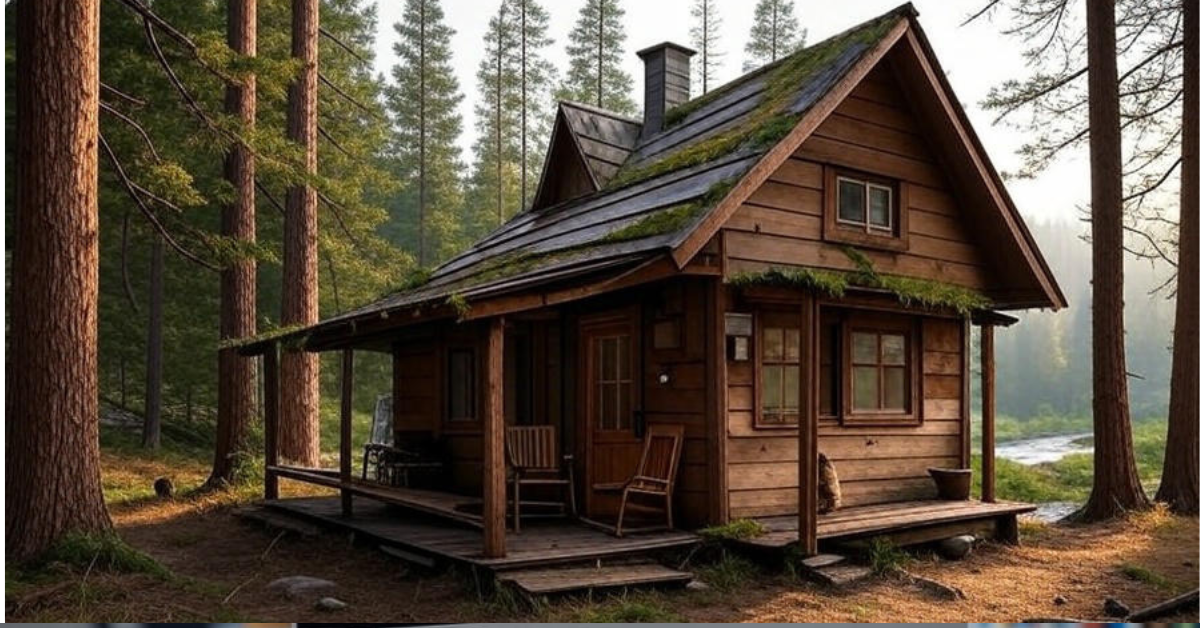Lifestyle
Survival Real Estate 2025: Best Off-Grid Homes & Land

If you’re scrolling through your feed, seeing news about storms or power outages, and you think, “What if I had a place that could handle all that?” That’s where survival real estate comes in. It’s not just about bunkers in the woods—it’s about finding a spot where you can live independently, with your own power and water. If you’re curious about properties that let you step away from the grid, this guide walks you through it all, from what’s out there to how to snag one. Let’s get into it.
Key Takeaways
- Survival real estate centers on self-sufficient spots like off-grid cabins and bunkers, with the off-grid housing market hitting $2.4 billion in 2023 and set to reach $4.76 billion by 2032 at a 7.9% growth rate.
- Buyers deal with steep starting costs but enjoy freedom; average U.S. off-grid land goes for about $356,632, and rural home loan requests have jumped 80% since 2020.
- Places like Arizona and Missouri stand out for their ease of rules and access to water, which helps with issues such as sourcing H2O and obtaining permits.
- Handy advice: Plan for extra expenses, such as solar care, which may increase your insurance by 20-50%.
- Weigh it against city living—survival spots shine in toughness but need know-how to thrive.
What Is Survival Real Estate?
Survival real estate means properties built for tough times, where you don’t rely on city services. Think homes with their own solar setup, water from a well or rain catch, and space for food storage. These aren’t just cabins; they include ranches, land plots, and even compounds with safe spots.
This idea took off after 2020, when folks saw how fragile things can be. Now, with about 20 million preppers in the U.S.—double since 2017—more people want these setups. It’s grown from a niche to something that everyday folks consider for peace of mind.
Why go for it? You cut bills, boost security, and live greener. Sites like SurvivalRealty.com list places with solar panels and remote spots, showing how these homes let you skip utility worries. Imagine no more blackouts—just your own power humming along.
Current Trends in the Market
The market for Survival real estate properties is booming. In 2023, off-grid housing pulled in $2.4 billion, and experts say it’ll hit $4.76 billion by 2032. That’s a steady climb, thanks to folks wanting less grid dependence after events like pandemics.
Rural areas are hot, with home loan apps up 80% since 2020. Prices in those spots rose over 30% from 2020 to 2023. Tech plays a big part too—think smarter solar and AI for energy use, making off-grid life easier than before.
More people are jumping in, from families to retirees. On X, folks share tips on new listings, showing how trends shift fast. If you’re thinking of buying, now’s a good time as options grow.
Types of Survival Real Estate properties
Survival real estate comes in different flavors, each with perks for self-reliance. Let’s break them down.
Off-Grid Cabins and Homes
These are cozy setups away from it all, often with solar and water systems. Prices range from $100,000 to $500,000, depending on size. They suit folks starting small. For example, a cabin in Michigan might have its own well and panels. Compared to regular homes, these save on bills but need upkeep.
Prepper Compounds and Bunkers
Built for safety, these have generators, safe rooms, and storage. They hold up 50% better in crises than standard houses. Take a Missouri compound sold for $300,000 last year—it had bunkers and space for supplies. Versus a basic home, these cost more upfront but offer real protection.
Sustainable Land and Ranches
Big plots for farming, with room for crops and animals. Look for “affordable off-grid land under 100k” to find deals. They’re greener than city lots, cutting long-term costs. A Tennessee ranch might let you grow food year-round, beating store reliance.
Best Locations to Buy
Where you pick matters—some spots make survival easier with good rules and resources.
Top States for Zoning Ease
Arizona and Missouri top lists for loose zoning and water. Arizona’s desert suits solar, while Missouri has wells and rivers. Over 6,545 U.S. listings average $9,635 per acre in the Midwest. Reddit users say water’s key—40% flag it as a must.
Regional Pros and Cons
West offers space but dry spells; East has better access but crowds. Tip: Scout permits first to skip headaches.
Idaho ranks high, too, with low rules and nature. Balance isolation with needs like roads.
How to Buy Survival Real Estate
Ready to hunt? Here’s a simple path.
Step-by-Step Buying Process
Start on sites like UnitedCountry.com or LandSearch.com which have filters for features. Budget for extras like land checks. Visit spots, chat locals. Then offer, using comps to negotiate.
Financing Options
Loans for off-grid can be tricky—lenders see them as risks. But rural options exist, with apps up 80%. Get pre-approved; experts say it smooths things. Or save cash for cheap land.
Challenges and Solutions
No path’s perfect—here’s how to handle bumps.
Common Hurdles
Costs hit hard: Solar setups run $50,000+, insurance 20-50% more. Isolation feels lonely, especially for families. Rules block 30% of states; water’s tough in dry spots.
Tips to Overcome Them
Yearly solar checks save money long-term. Versus renting, owning builds value, but teach skills first. Join groups for support—Reddit has tips on zoning. Now that you know the hurdles, let’s look at some real stories to see how others make it work.
Real-World Examples
Seeing these properties in action can spark ideas. Take an Arizona off-grid cabin sold for $200,000 in 2025—it came with a rainwater system that kept a family going during a dry spell. The owner shared online how it saved them during power cuts, proving the setup’s worth.
Then there’s a Missouri prepper ranch on 100 acres, bought for $300,000 last year. It had bunkers and a generator, and the buyer on Reddit raved about saving 20% on utilities compared to their old city home. It’s a solid pick for anyone wanting security.
In Tennessee, a family turned a plot into a homestead, growing food and raising chickens. They tackled the isolation by connecting with neighbors, showing how scalability works for groups. These examples show what’s possible with the right plan.
FAQs
- What is survival real estate? Survival real estate means homes or land like off-grid cabins and prepper compounds, built for self-reliance with solar and water systems. It’s perfect for anyone wanting to dodge urban hassles.
- How much does off-grid land cost? Off-grid land averages $356,632 in the U.S., or about $9,635 per acre, per 2025 listings. You can find deals under $100,000 in places like the Midwest.
- Where to find Survival real estate for sale? Check sites like SurvivalRealty.com or UnitedCountry.com for listings with filters for bunkers or solar. They’re great starting points.
- What are the hidden costs of Survival real estate? Expect extra costs like $5,000 yearly for solar upkeep and 20-50% higher insurance. Water systems in dry areas add more, so plan.
- Is financing available for off-grid properties? Yes, rural loans or specialized lenders offer options, though it’s tricky. With apps up 80% since 2020, pre-approval makes it smoother.
- Best states for prepper properties? Arizona, Missouri, and Tennessee shine with easy rules and resources. Look at water access and isolation when picking.
Conclusion
You’ve got a solid grasp on survival real estate now— from off-grid cabins to prepper ranches, the options are exciting and practical. Whether it’s saving on bills or prepping for tough times, these properties offer a fresh start. Start exploring today on sites like LandSearch.com, and take that first step toward your secure home!
